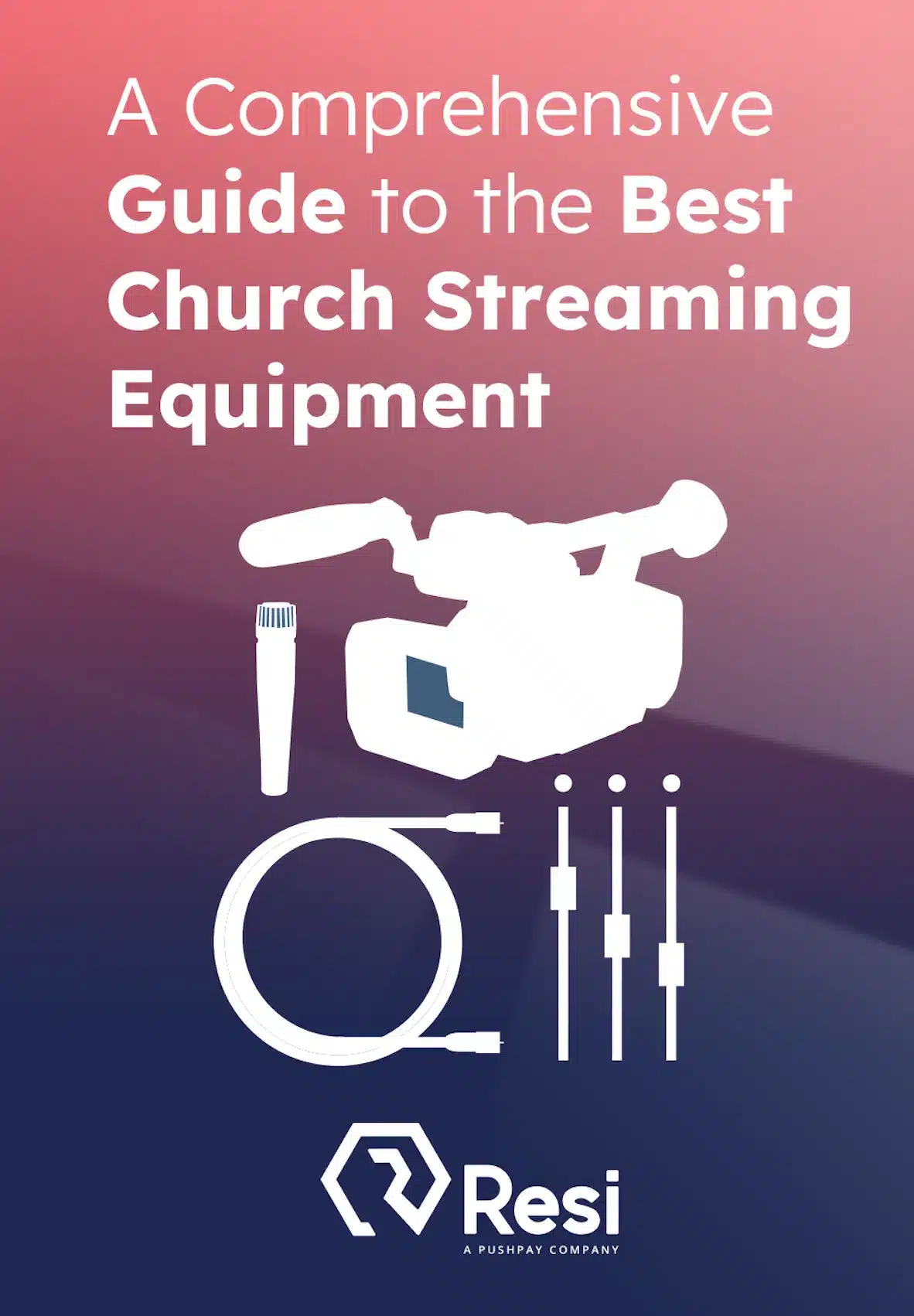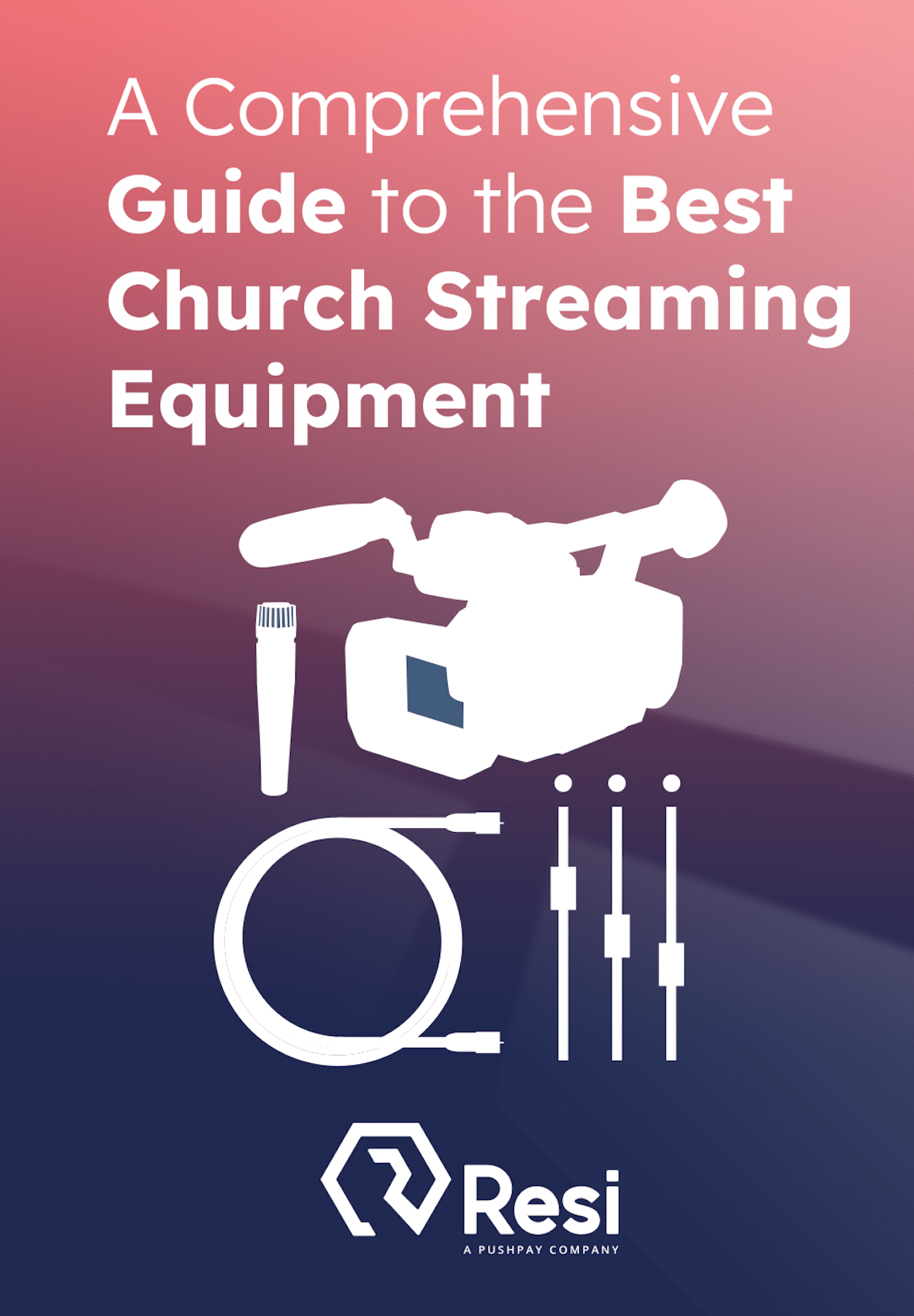
Whether you’re broadcasting to YouTube, Facebook, or a custom app, sending a stream to multiple platforms manually can be time-consuming and error-prone. That’s where multi-platform streaming services come in.
Each streaming platform has its own specific API (Application Programming Interface) that you must use to interact with it. Managing multiple platform-specific APIs can be challenging, but services like Resi can automate this process, allowing you to send to multiple platforms at once and streamline your workflow.
What is a video streaming API?
API’s are a set of tools that let different software talk to each other. In live streaming, APIs let platforms, encoders, and distribution networks work together efficiently. Instead of setting up a stream for each destination manually, an API does it for you.
For example, an API can:
- Send your stream to multiple platforms at once
- Adjust video quality based on network conditions
- Provide real-time analytics on stream performance
- Integrate with third-party apps for better content management
With a well-designed live streaming API, organizations can customize their workflows, automate processes, and have control over their streams without the complexity.
Multi-platform streaming without APIs
Without a service that manages platform APIs, sending to multiple platforms is challenging. A manual setup requires understanding each platform’s API specifications, multiple software configurations, and constant monitoring to make sure each stream is running smoothly. If one stream has an issue, it can break the whole workflow and cause dropped connections or degraded quality on one or more platforms.
A typical multi-platform setup without API management means configuring each platform’s specific API separately, setting the right resolution and bitrate for each, and ensuring each platform is receiving the right feed. This adds to the workload for technical teams and creates opportunities for errors. Bandwidth limitations also become a problem, as sending multiple high-quality streams from one location can put a lot of strain on an internet connection.
For organizations with limited resources, managing these different platform APIs without a unified service is overwhelming. The more platforms you add, the more difficult it gets to maintain a consistent and reliable stream across all platforms. With a multi-platform streaming service, a single source stream can be sent to multiple platforms automatically, with the service handling the specific API requirements for each destination.
Best Livestreaming Equipment
Discover what top-rated equipment we recommend adding to your church streaming toolkit.
Download for free!
Automating multi-platform distribution
One of the biggest benefits of using a multi-platform streaming service is automation. Instead of learning and configuring each platform’s API manually, these services can handle all aspects of stream distribution from one interface.
Automation is particularly useful for organizations that need to reach multiple audiences at once. Without a service managing these connections, broadcasters have to manually configure each platform’s API, check for compatibility issues, and troubleshoot problems as they arise. Streaming services remove these hurdles by automatically adapting the stream to the technical requirements of each destination platform.
For example, a streaming service can send a high-resolution stream to a video-on-demand platform while simultaneously optimizing a lower-bitrate version for social media. This kind of automation means the right content reaches the right audience without extra encoding steps.
These services also integrate with content management systems so organizations can automate post-event distribution. For example, with Resi On Demand, a live stream can be archived and made available for playback without manual intervention. This extends the life of the content and gives the viewer the flexibility to watch at their convenience.
Tracking performance with streaming analytics
A good API doesn’t just distribute—it also provides valuable insights through analytics. Understanding audience engagement, stream performance, and technical metrics can help broadcasters improve their content strategy.
Resi’s analytics tools allow you to see viewer activity in real time. APIs can collect data on audience size, watch time, and geographic distribution, so you have a clearer picture of how your content is performing.
In addition to audience engagement, APIs can also track technical metrics like buffering rates, dropped frames, and bitrate fluctuations. If a specific platform is experiencing playback issues, these insights make it easier to diagnose and fix the problem.
By using API-driven analytics, you can fine-tune your streams for better viewer retention and overall performance.
Integrating APIs with live streaming software
If you’re using professional live streaming software like ProPresenter Stream, APIs provide deeper integration and automation.
An API can be set up to trigger a live stream automatically when a scheduled event starts in ProPresenter. This removes the manual setup and reduces the chance of human error. You can also use APIs to sync streaming settings between multiple software tools, so there is a consistent workflow across all platforms.
For teams managing multiple simultaneous streams, APIs offer the flexibility to control and adjust settings remotely. Whether switching between different camera angles, adjusting audio levels, or inserting pre-recorded content, APIs provide an efficient way to streamline operations.
Choosing the right live streaming API
Not all APIs are built the same. When choosing a live streaming solution, there are several factors to consider. Compatibility is important—does the API work with your existing encoders and streaming platforms? Scalability is another factor—can it handle increased viewer demand without interruptions?
Reliability should also be a priority. Look for APIs that have automated failover and content redundancy to prevent disruptions. Finally, ease of integration is crucial. An API should be easy to implement, even for teams without development experience.
By choosing the right API, you can simplify multi-platform streaming while keeping total control of your workflow.
Best Livestreaming Equipment
Discover what top-rated equipment we recommend adding to your church streaming toolkit.
Download for free!
As live streaming grows, APIs are becoming an essential tool for efficient, high-quality content delivery.
With the ability to improve performance, integrate with third-party tools, and provide real-time analytics, an API for video streaming gives you the flexibility to focus on content instead of technical challenges.
No API? No problem with Resi
With Resi, you don’t have to worry about setting up an API to manage multi-platform streaming. Resi’s built-in integrations allow you to broadcast to YouTube, Facebook, your website, and other platforms simultaneously—without the need for extra software or manual configurations. Unlike traditional RTMP workflows that require complex API setups to distribute streams, Resi’s platform handles everything seamlessly. Resi’s cloud-based streaming ensures that your content is delivered reliably, even in challenging network conditions, and eliminates the risk of dropped connections or buffering issues. This means you can focus on creating engaging content while Resi takes care of distribution, automation, and fail-safe streaming.
DISCLAIMER: this content has been generated, at least in part, by artificial intelligence.







